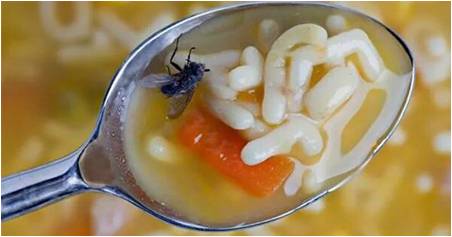Food safety is being challenged nowadays by the global dimensions of food supply chains, the need for reduction of food waste and efficient use of natural resources such as clean water. Food safety deals with safeguarding the own national food supply chain from the introduction, growth or survival of hazardous microbial and chemical agents. India is truly developing now and its income, infrastructure, per capita income has also developed .But the major problem faced by India is the problem food management and its distribution.
Why food security is needed in India?
India has a “serious” hunger problem and ranks 100th out of 119 countries on the global hunger index behind North Korea, Bangladesh and Iraq (Global Hunger Index 2017). More than 20% of Indian children under the age of 5 have lower weight in relation to their height. Despite India is the second-largest producer of rice, wheat, sugarcane, cotton and groundnuts, as well as the second-largest fruit and vegetable producer, accounting for 10.9% and 8.6% of the world fruit and vegetable production, respectively and it has second highest under-nourished population in the world. In India, food safety and security is a growing concern with emerging incidents of food contaminations, which if remain unnoticed can lead to various health hazards, illness, outbreaks and even death. Also it affects the India’s socio-economic status and also creates distress in export market. Recently many cases of food contamination have been reported in India, which demands the attention of local authorities and regulators suchas the case ofmassive product recall by Nestle Indiawithdrawing Maggi noodles from themarket due to presence of high lead contamination. Also, many cases of food poisoning have been reported in school meals. Similarly, pesticides residues have even been found in packaged food products, such as soft drinks, bottled water and in human tissues in India.
Existing and Emerging Food Safety Problems
A variety of chemical, biological and physical hazards are the major causes of food safety problems. Among these the bacterial contaminants, environmental contaminants including pesticide residues, mycotoxins and adulterants have been reported to be responsible for causing large-scale outbreaks of food poisoning and smaller incidents.
Contamination Risk
Food contamination has been recorded in history for as early as 8,000 years ago; however, the growth in agribusiness and globalizations have aided the problem in spreading all over the planet. Food contamination refers to addition or entry of any foreign material into food, which is not a part of it and can be unpalatable, objectionable or harmful. Food may be accidently or deliberately contaminated. It can be physical, chemical or biological. Physical contamination refers to objects which contaminate food as they can be source of contamination e.g. hair, glass or metal, fingernails, jewellery, dirt, etc. Chemical contamination refers to chemical substances which enter food and are foreign to it e.g. cleaning agents, detergents, agrochemicals (pesticides, fungicides),environmental contaminants (natural toxins, minerals, metals, rat poison), veterinary medicines, processing contaminants (non-permitted colours, preservatives, chemicals migrated from packaging material, lubricating oil) etc while biological contamination refers to foreign material obtained from living organisms suchas microorganism, insects, rodents, pests, etc. Besides this another source of contamination is due to cross-contamination i.e. transfer of contaminants from one source to another e.g. dirty clothes, hands, utensils, improper personal hygiene, pests, mixing of cooked food with raw food, improper waste and garbage control, etc. Cooking can increase or decrease the toxicity of some of these contaminants but has little effect on most chemicals.
To meet growing demand for food production, farmers in India use a range of fertilisers and pesticides. As a result, the agro-chemicals used to grow produce, as well as the veterinary drugs/antibiotics commonly used in animal farming are often found in trace quantities in the final product, and thus enter the food chain.
The preventative measures to control food contamination
There is legislation in place to regulate the levels of several chemicals in the food. Unhealthy additives and adulterants are legally not allowed for use. However, effective surveillance and response systems are required to prevent chemical hazards from entering the food supply and posing harm to the public. Most importantly, the food industries must accept the need to be more honest and upfront in producing safe commercial food products as well as protecting the public from food contamination.
Recent Government Initiatives on Food Safety
In India effective food control system is undermined by plethora of fragmented legislation, multiple jurisdictions and weakness in surveillance, monitoring and enforcement, which neither assures safety, hygiene or quality.
Food contamination can be prevented by properly inspecting the raw materials and food ingredients, following Good Manufacturing Practices (GMP) such as removal of jewellery, etc while dealing with food items, eliminating potential sources of food contaminants, practising sanitary principles of personal hygiene, thorough washing of raw materials, etc. Tests such as mass spectrometry could be used for detecting presence of chemical contaminants, plating could be done to detect specific microbial contamination, ELISA assay test, sensors, etc. India’s Food Safety and Standards Authority of India (FSSAI), a body formed under the Food Safety and Standards act, is working to strengthen the ability of regulators and the government to handle food contamination incidents.
Food Laws and regulation in India
The Indian Parliament has recently passed the Food Safety and Standards Act, 2006 that overrides all other food related laws. Such as;
- Prevention of Food Adulteration Act, 1954
- Fruit Products Order,1955
- Meat Food Products Order ,1973
- Vegetable Oil Products (Control) Order, 1947
- Edible Oils Packaging (Regulation) Order 1988
- Solvent Extracted Oil, De- Oiled Meal and Edible Flour (Control) Order, 1967,
- Milk and Milk Products Order, 1992 etc are repealed after commencement of FSS Act, 2006.
Source: fao.org, foodsafety.com, thehindubusinessline.com, nutritionfoundationofindia.org, Rather et al 2017. The Sources of Chemical Contaminants in Food and Their Health Implications. doi: 10.3389/fphar.2017.00830
